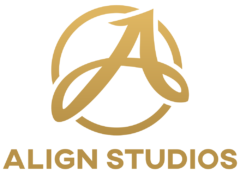The Core is the buzzword in the fitness world, but what exactly does it refer to beyond the surface level of “abs”? The Core is often referred to as the powerhouse of the body, and for good reason. It serves as the foundation for our movements, providing stability, strength and support for various activities. In this blog post, we will delve into what the core is, explore its intricate muscles and shed light on the significance of having a strong core throughout all stages of life. Defining the Core: The Core refers to the central region of the body, extending from the diaphragm at the top to the pelvic floor at the bottom. It includes not only the visible abdominal muscles but also the deeper muscles that provide stability and support to the spine and pelvis. The core acts as strong foundation for our movements, influencing posture, balance and overall functional strength. The Muscles of the Core: Rectus Abdominis – Often referred to as the “six-pack” muscles, these muscles run vertically along the front of the abdomen. They are responsible for flexing the spine and assisting in movements like sit-ups and crunches. Obliques – The internal and external obliques are located on the side of the abdomen and are responsible for trunk rotation and lateral flexion. Transverse Abdominis – The deepest abdominal muscles that wrap around the torso, they act like a corset, providing stability and support to the internal organs. Erector Spinae – Located along the spine, these muscles aid in spinal extension and help to maintain an upright posture. Multifidus – These small muscles run along the spine and assist in spinal stability and posture. Diaphragm – A dome shaped muscle beneath the lungs, crucial for breathing and maintaining core stability. Pelvic Floor Muscles – Located at the base of the pelvis, these muscles support the pelvic organs, contribute to core stability and have a crucial role in bladder and bowel control. Importance of a Strong Core: Improved Posture: A weak core often leads to poor posture, which can cause pain and discomfort. Strengthening the core muscles helps maintain proper alignment, reducing strain on the spine, reducing the risk of postural imbalances and relates issues such as back pain. Improves Functional Movement: Core Strength is essential for performing everyday movements such as bending, twisting, lifting with great ease and efficiency. Enhances Balance and Stability: A strong core provides a solid foundation, enhancing balance and stability during various physical activities including sports, exercise and even simple tasks such as walking and reaching. Injury Prevention and Rehabilitation: A well-developed core acts as a protective shield for the spine, reducing the likelihood of strains, sprains and other injuries. It also helps in the rehabilitation process for those recovering from spinal issues. Boosts Athletic Performance: Athletes across various sports benefit from a strong core as it enhances power, agility and overall performance. Support during Pregnancy and Postpartum: A strong core can support the growing baby, the changing body during pregnancy and postpartum recovery. Back Pain Relief: A weak core can contribute to back pain, while a strong core can help alleviate it by providing support and reducing stress on the spine. Ageing Gracefully: As we age maintaining a strong core becomes increasingly important. It help prevent age related issues like balance problems, falls and decreased mobility, allowing us to stay active and independent for longer. Conclusion: The Core is not a surface level aesthetic concern but a crucial component of our overall strength and well-being. It comprises of various muscles that work together to provide stability, support and power to our movements. By developing a strong core, we can enjoy improved posture, reduced risk of injuries, enhanced balance and greater functional strength at every stage of life. Embrace the power of core training in all stages of life and unlock your full potential for a healthier and more active lifestyle.
